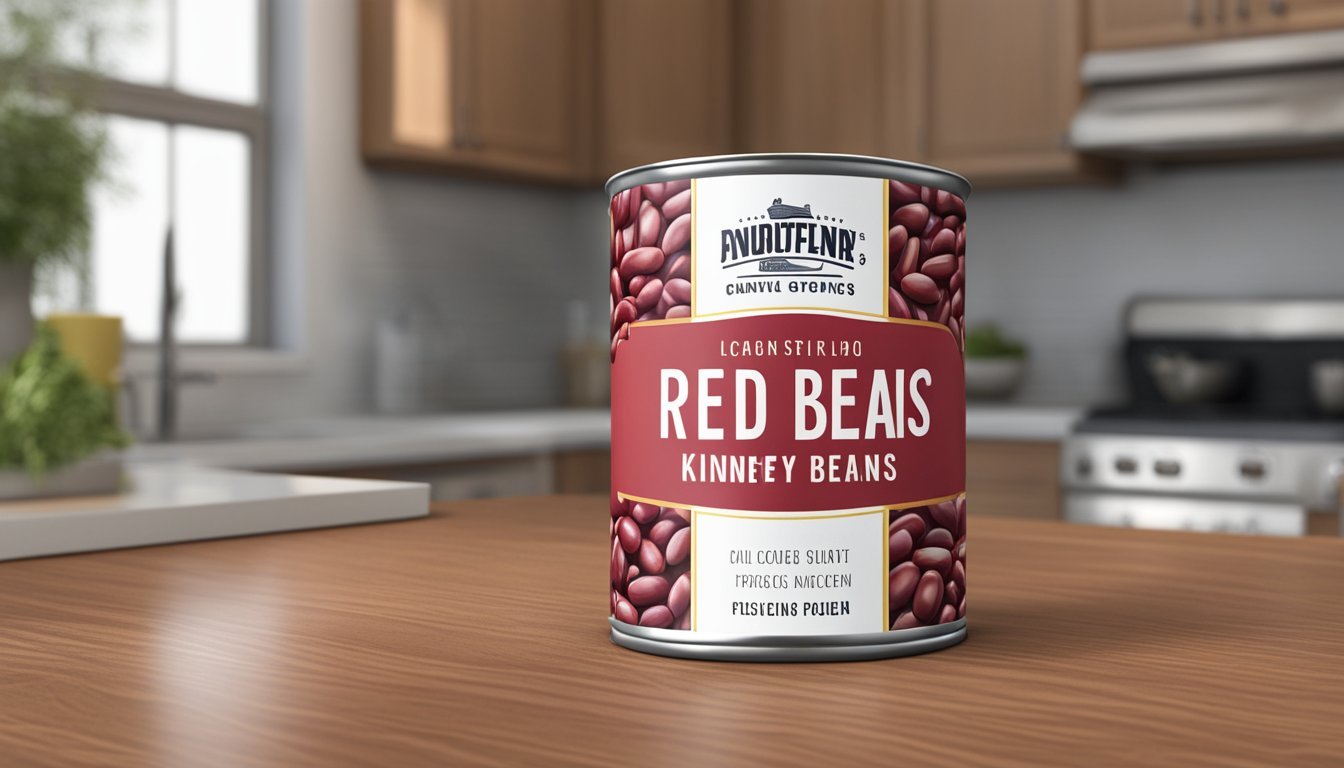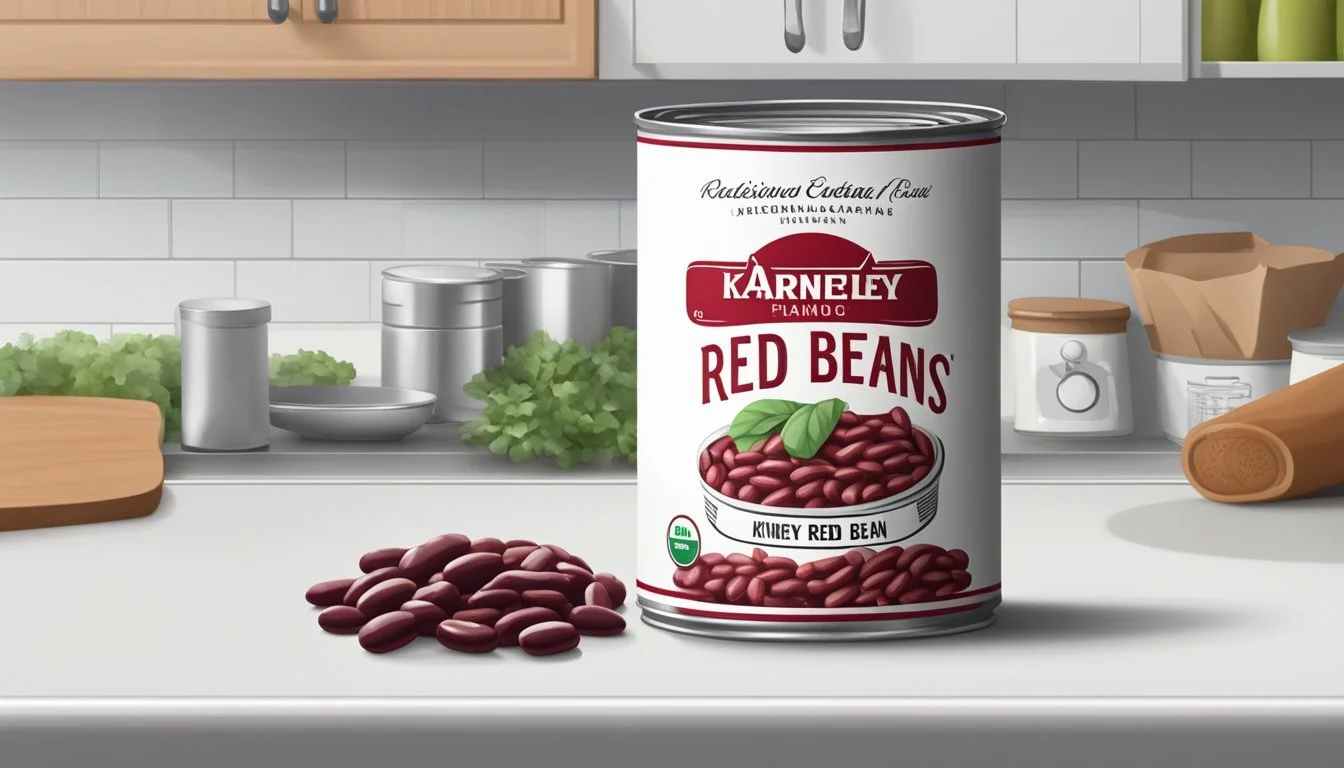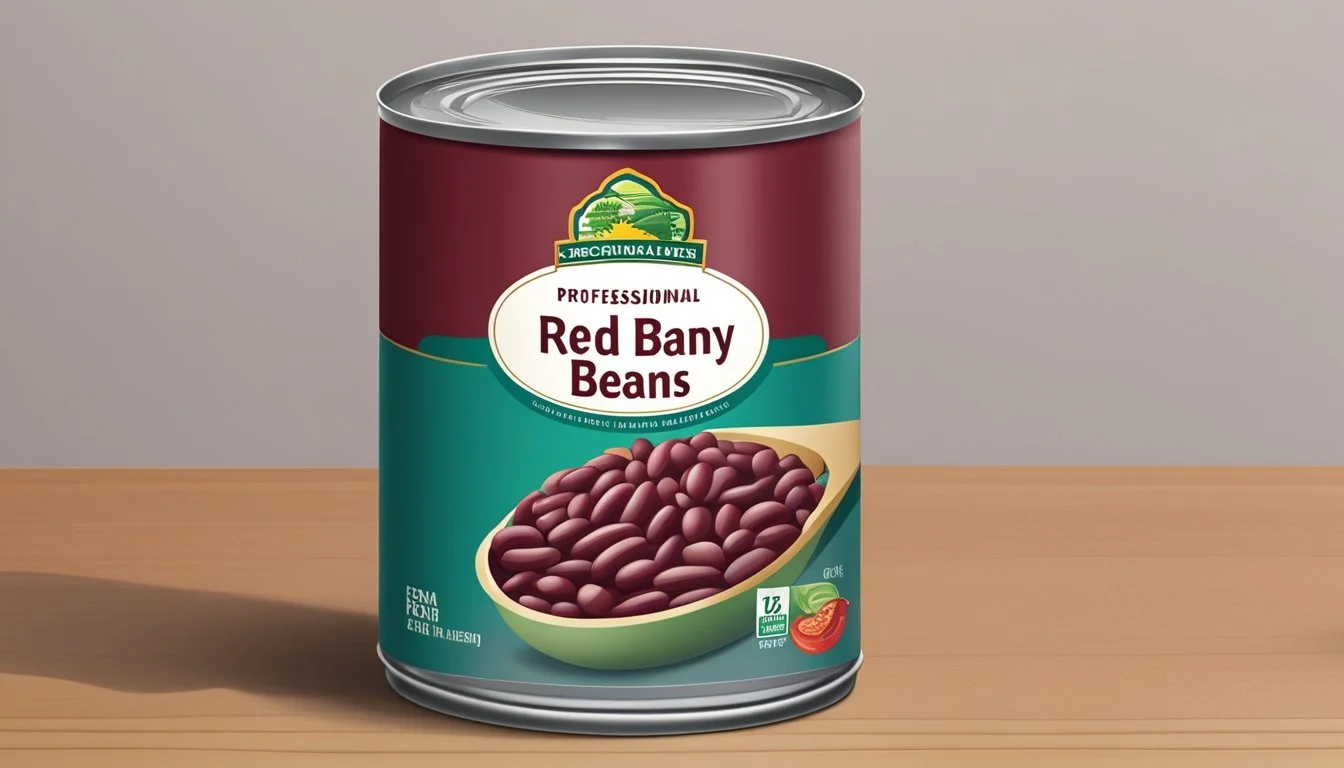How Many Ounces in a Can of Red Kidney Beans?
Understanding Sizes and Measurements
Canned red kidney beans are a convenient and versatile ingredient, commonly used in various recipes ranging from salads and chili to stews and rice dishes. The canned variety of red kidney beans not only saves time but also offers a consistent quality and taste that can be relied upon year-round. When it comes to the weight of these canned beans, it typically varies depending on the brand and the size of the can.
The standard size for a can of red kidney beans is 15 ounces. This amount is suitable for a family meal and easily incorporated into most recipes without significant leftover. Inside the can, the beans are usually packed in water, sometimes with added salt or other preservatives. Once drained, the beans themselves weigh less than the net weight specified on the label, which includes the weight of the liquid.
Consumers should note that while the 15-ounce can is the most common, some brands may offer larger or smaller cans, adjusting the number of ounces accordingly. Knowledge of these variations is essential for recipe adjustments, especially when measured red kidney beans are required for precise portions. It's always recommended to check the label for the exact net weight to ensure proper recipe conversions.
Understanding Kidney Beans
Kidney beans serve as a versatile and nutrient-dense staple in many diets, offering a variety of types and health benefits, as well as different methods for cooking and preparation.
Types and Varieties
Kidney beans are a type of legume, originating from Central America, falling under the category of the common bean. There are numerous varieties, with their colors ranging from red, white (cannellini), and speckled (pinto beans). Each variety offers a unique texture and flavor profile, suitable for a range of culinary applications.
Nutritional Profile
Kidney beans are a rich source of protein, fiber, and complex carbohydrates, while being low in fat. A typical serving size of cooked kidney beans (approximately 100 grams) contains around 127 calories, 8.7 grams of protein, 22.8 grams of carbohydrates, and 6.4 grams of fiber. Key minerals present include iron, manganese, potassium, with notable amounts of folate and other essential vitamins.
Cooking and Preparation
Kidney beans are sold both as cooked canned beans and as dried beans. To prepare dried kidney beans, it is advisable to soak them to shorten cooking time and to ensure even cooking. Subsequently, they can be boiled, pressure cooked, slow cooked, or prepared on the stovetop. Cooking times can vary, with boiling typically requiring at least an hour, while pressure cooking may take about 15 minutes.
Health Impacts
The nutrients in kidney beans contribute to several health benefits. The fiber content helps with weight management and supports healthy blood sugar levels, making them beneficial for individuals managing diabetes. The low glycemic index of kidney beans slows digestion, which may also aid in blood sugar management. Additionally, kidney beans contain prebiotics, which support the growth of healthy bacteria in the gut. Regular consumption of kidney beans can be linked to a lower risk of chronic diseases and improved overall health.
Canned Kidney Beans
Canned kidney beans offer a convenient and ready-to-eat option for a variety of dishes, providing a rich source of nutrients while saving time on food preparation.
Can Sizes and Weights
15 oz can: Contains approximately 1.5 cups of beans when drained, which translates to around 10 ounces (283 grams) of beans.
Other can sizes may include 8 oz and 29 oz, with weights proportional to the 15 oz standard.
Preparation and Usage
Canned kidney beans are typically used in chili, salads, and as a side dish.
They are pre-cooked and ready to eat; rinse before use to reduce sodium content.
Cooking: Heat thoroughly before serving; can be included directly in recipes.
Storage and Shelf Life
Unopened cans of kidney beans should be stored in a cool, dry place.
Shelf life: 1-2 years; check expiration date for the best quality.
Once opened, store in a refrigerator for up to 2 days in a non-metallic, sealed container.
Nutritional Comparison
One serving of canned kidney beans (about 1/2 cup drained) generally contains:
Calories: 100-120
Protein: 7-9 grams
Fiber: 5-7 grams
Sodium: 200-400 mg (varies by brand and whether it's low-sodium)
Note: Values can vary between different brands and whether it is a standard or low-sodium product.
Dry Kidney Beans
This section provides specific information on the measurement conversions, preparation methods, and tips for selecting and storing dry red kidney beans. The reader will find guidelines on how to safely handle and prepare these beans, ensuring the best culinary results.
Measuring and Conversion
Dry red kidney beans do not have a standardized weight per can since they are usually sold in bags. However, when it comes to cooking, knowing their equivalent measures is crucial. Typically, 1 cup of dry red kidney beans will weigh around 7 ounces and will yield about 3 cups of cooked beans, enough for roughly four servings.
Dry Kidney Beans Weight Yield after Cooking Servings 1 cup 7 ounces 3 cups 4 servings
Preparation Methods
One should always thoroughly rinse and sort dry kidney beans to remove any debris or stones. They contain a toxin called phytohemagglutinin, which can be toxic, so it's important to soak and cook them properly to eliminate it. Soaking can be done in two ways:
Overnight soaking: Cover the beans with cold water and leave them to soak for at least 8 hours.
Quick soak: Boil the beans for two minutes, then let them soak for one hour off heat.
After soaking, the beans must be drained and rinsed. Cooking times can vary:
Stovetop: For about 1 to 1.5 hours until tender.
Pressure cook/Instant Pot: Cook for around 30 minutes under high pressure.
Selecting and Storing
When selecting dry red kidney beans, one should look for beans that are uniform in color with a matte finish. It's preferential to buy from a brand or store with good turnover to ensure freshness.
Store the beans in a cool, dry place. Airtight containers are recommended to protect them from moisture and pests, which can extend their shelf life to about two or three years. If the dry beans show any signs of moisture or pest damage, or if they have an off smell, they should not be used.
Culinary Applications
In this section, we will explore the various ways red kidney beans can be used to enhance dishes across many cuisines. From hearty chili recipes to refreshing salads, these versatile legumes are a powerhouse ingredient in both vegetarian and meat-centric dishes.
Recipes Featuring Kidney Beans
Red kidney beans serve as a hearty base for a variety of recipes. They are a staple in chili recipes, providing a rich texture and flavor that absorbs seasonings well. A classic vegetarian chili (What wine goes well with vegetarian chili?) can be made using canned kidney beans for convenience or dried kidney beans for a more authentic approach.
Vegetarian Chili:
Prep Time: 15 minutes
Cook Time: 40 minutes
Ingredients: onion, bell peppers, garlic, canned kidney beans, tomatoes, chili powder, cumin, salt, pepper, olive oil
The beans are also a fantastic addition to rice dishes, such as the traditional Creole dish known as red beans and rice, where they are the star protein.
Red Beans and Rice:
Prep Time: 10 minutes
Cook Time: 1 hour 30 minutes
Ingredients: smoked sausage, dried kidney beans, onion, celery, green bell pepper, chicken stock, Cajun seasoning, rice
In salads, their bold color and firm texture add both visual appeal and sustenance, pairing well with a tangy vinaigrette.
Pairings and Substitutions
Kidney beans can be substituted in recipes calling for other beans, given their similar texture and ability to absorb flavors. However, each bean offers its unique taste:
Black Beans: Earthier, great for Mexican dishes
Chickpeas: Nuttier, ideal for Mediterranean cuisine
Lima Beans: Starchier, excellent in soups
Navy Beans: Milder, commonly used in baked beans
Black-eyed Peas: Distinctive flavor, used in Southern dishes
Lentils and soybeans may alter the texture and flavor profile in dishes typically using red kidney beans, due to their different cooking properties.
Cooking Techniques
Kidney beans can be prepared using a variety of techniques to coax out their best texture and flavor. Dried kidney beans generally require soaking—either overnight or using a quick soak method by boiling and then letting them stand for an hour.
Stovetop: Boiling softened beans until tender, typically 1-2 hours.
Pressure Cook: A faster method using a pressure cooker to reduce cooking time significantly, usually about 5-10 minutes at high pressure, followed by a natural pressure release.
Slow Cooker: Ideal for slowly infusing flavors; canned kidney beans or pre-soaked dried beans can be cooked on low heat for 6-8 hours or on high for 3-4 hours.
A key to great taste is seasoning. Kidney beans should be well-seasoned with a blend of spices tailored to the dish, ensuring the standout flavor pairs well with the rest of the ingredients.
Consumer Considerations
When selecting canned red kidney beans, consumers must weigh factors such as cost, brand reputation, dietary needs, and environmental impact. These considerations ensure the choice aligns with their personal values and needs.
Economic Factors
Purchasing canned red kidney beans can have various economic implications for the consumer. The price of canned kidney beans can fluctuate based on the brand and quantity. Typically, store brands may offer more budget-friendly options compared to premium brands. Additionally, bulk purchases can sometimes reduce the cost per ounce.
Cost comparison:
Store brand (15 oz can): $0.89 - $1.29
Premium brand (15 oz can): $1.49 - $1.99
Label Reading and Brands
Consumers should thoroughly read labels to compare nutritional content and ingredients among different brands. Labels provide essential information regarding any allergens, which is crucial for those with allergies. It's also beneficial for individuals following vegetarian or vegan diets to ensure no animal products are used in the beans' preparation.
Label Checklist:
Nutritional information
Allergen warnings
Dietary suitability (e.g., vegetarian, vegan)
Dietary Preferences
Red kidney beans are a staple in vegetarian and vegan diets due to their high protein content. For consumers with specific dietary preferences, canned red kidney beans offer convenience but may contain added salt or preservatives. Opting for organic or no-salt-added varieties can align better with health-conscious preferences.
Dietary Product Types:
Organic canned kidney beans
No-salt-added canned kidney beans
Low-sodium canned kidney beans
Environmental Impact
The production of red kidney beans, like other legumes, has a lower environmental impact than many animal proteins, making them a sustainable choice. The farming practices of the brand, the materials used for canning, and the transportation involved all contribute to the carbon footprint. Consumers are increasingly considering the sustainability of farming practices and the recyclability of packaging.
Environmental Checklist:
Sustainable farming practices
Recyclable materials
Carbon footprint of transportation
Conclusion
In determining the weight of canned red kidney beans, consumers typically find that a standard can size is 15 ounces. However, after draining the liquid, the remaining beans weigh approximately 9 ounces, which equates to just over 1 cup of beans.
Can Sizes and Contents
Standard Can: 15 ounces (approx. 250-280 beans)
Large Can: 19 ounces (up to 350 beans)
Preparation Insights
When preparing the beans from the can, it is recommended to drain and rinse them. This helps in removing the canning liquid which may contain excess sodium. Following this, they can be heated or added to various recipes.
Nutritional Profile
In every 3.5 ounces (100 grams) of boiled kidney beans, one can expect:
Calories: Available on nutritional labels.
The nutritional value and the number of beans are consistent across brands, though it’s always prudent to check individual labels for specific information.
One should note that these beans are rich in bioactive plant compounds and nutrients, contributing to a healthy diet. The color, especially in red kidney beans, is attributed to an anthocyanin, a type of plant pigment with antioxidant properties.
In conclusion, the weight and number of beans in canned red kidney beans are standard across various brands, and their rich nutritional profile makes them a valuable addition to any meal.








